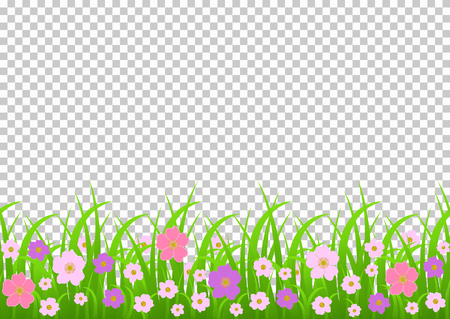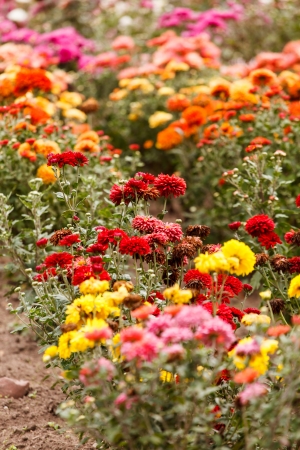Introduction to British Cottage Garden Charm
The traditional British cottage garden is a true celebration of nature’s beauty and a reflection of the timeless charm found in rural England. Characterised by informal planting, a tapestry of colours, and an abundance of blooms, these gardens evoke a sense of nostalgia and warmth. Their enchanting style comes from a harmonious blend of flowers, herbs, shrubs, and climbers all nestled together in seemingly effortless abundance. What truly sets the British cottage garden apart is its ability to remain vibrant throughout the changing seasons. By carefully choosing plants that peak at different times of the year, you can ensure your garden never loses its allure. Seasonal planting not only sustains year-round interest but also attracts wildlife and provides ever-changing textures and scents. Embracing this approach allows you to enjoy a living landscape that evolves with each season, bringing continual delight right outside your door.
Spring Planting: Kicking Off the Season
Spring is the true beginning of the gardening year in British cottage gardens. As winter fades, the garden bursts into life with early blooms that set the tone for months to come. Planting at this time ensures a bright and cheerful display, welcoming both gardeners and wildlife back into the space.
Essential Spring Flowers
Some key spring plants capture the essence of a traditional British cottage garden. Primroses (Primula vulgaris) offer delicate pastel shades that thrive in borders and beneath shrubs. Daffodils (Narcissus) bring classic yellow trumpets, heralding spring’s arrival. Tulips add bold colour choices, from soft pinks to rich reds and purples, perfect for beds or containers.
Top Spring Plants for Cottage Gardens
| Plant Name | Flower Colour | Best Planting Time | Ideal Position |
|---|---|---|---|
| Primrose | Cream, yellow, pink, purple | Autumn or early spring | Partial shade, moist soil |
| Daffodil | Yellow, white, orange | Autumn | Sunny or partial shade, well-drained soil |
| Tulip | Pinks, reds, purples, whites | Autumn | Sunny spot, fertile soil |
Tips for Early-Season Colour and Interest
- Layer bulbs: Plant bulbs at different depths to stagger their flowering times for a longer display.
- Mix varieties: Combine early and late-flowering types to extend your garden’s spring interest.
- Add perennials: Include hardy perennials such as forget-me-nots and lungwort for extra texture alongside bulbs.
- Create drifts: Plant flowers in informal groups or ‘drifts’ to achieve a relaxed cottage look.
- Cottage-style containers: Use pots near doorways or paths filled with tulips and primroses for instant kerb appeal.
The British Cottage Garden Touch
A successful spring planting scheme blends tradition with personal taste. By focusing on these classic flowers and simple techniques, you can create a welcoming cottage garden atmosphere from the very start of the year.

3. Summer Blooms: Peak Colour and Structure
Summer is the time when British cottage gardens truly come into their own, bursting with vibrant colour and rich textures. Classic summer bloomers such as roses, foxgloves, and delphiniums take centre stage, each adding their unique charm to the garden’s design. Roses, whether rambling over arches or forming dense shrub borders, offer a quintessentially English fragrance and a romantic touch. Foxgloves bring vertical interest with their tall spires of bell-shaped flowers, ideal for the back of borders or naturalistic drifts. Delphiniums, with their striking blue hues, add drama and elegance, especially when planted in groups.
Layering for a Lush Effect
To achieve that classic cottage look, focus on layering your plants. Place taller varieties like delphiniums and foxgloves at the back, mid-height perennials such as hardy geraniums or campanulas in the middle, and low-growing ground covers like lady’s mantle at the front. This not only maximises visual appeal but also ensures every plant receives adequate sunlight and airflow.
Maintaining Summer Abundance
Keep your borders looking full by deadheading faded blooms regularly—this encourages repeat flowering and keeps beds tidy. Water deeply during dry spells, especially around roses, and mulch generously to retain moisture. Feeding with a balanced fertiliser after the first flush of flowers will support further growth.
Encouraging Wildlife
Classic summer plants attract bees and butterflies, bringing movement and life to your garden. Leave some seed heads for birds later in the season and avoid harsh chemicals to maintain a healthy ecosystem. With thoughtful planting and simple care, your cottage garden can be a vibrant haven all summer long.
4. Autumn Accents: Extending Vibrancy
As summer fades, British cottage gardens can still brim with colour and texture by thoughtfully choosing plants that shine in autumn. The key is to focus on late-flowering perennials, ornamental grasses, and autumn bulbs, all of which help maintain visual interest as the days grow shorter and the air cools.
Late-Flowering Perennials
Many perennials come into their own just as other plants are winding down. Varieties like Aster, Helenium, and Sedum provide cheerful blooms well into October, drawing in bees and butterflies. Their robust hues—purples, oranges, and deep pinks—create a striking contrast against the mellow tones of autumn foliage.
Ornamental Grasses for Structure and Movement
Ornamental grasses are a hallmark of cottage gardens in autumn. Their feathery plumes and swaying forms add movement and architectural structure, catching the low sunlight beautifully. Popular choices for British gardens include Miscanthus sinensis, Pennisetum alopecuroides, and Stipa tenuissima.
| Plant Type | Recommended Varieties | Main Features |
|---|---|---|
| Late-Flowering Perennials | Aster ‘Monch’, Sedum ‘Autumn Joy’, Helenium ‘Moerheim Beauty’ | Long-lasting blooms, pollinator-friendly, bold colours |
| Ornamental Grasses | Miscanthus sinensis, Pennisetum alopecuroides, Stipa tenuissima | Movement, structure, winter interest |
| Autumn Bulbs | Nerine bowdenii, Colchicum autumnale, Cyclamen hederifolium | Late-season flowers, compact size, vibrant colour splashes |
Autumn Bulbs for Late Colour
Bursting through fallen leaves, autumn bulbs such as Nerine bowdenii (Guernsey lily), Colchicum autumnale (autumn crocus), and Cyclamen hederifolium bring unexpected pops of pink, lilac, or white. These bulbs thrive in the UK climate and are perfect for adding highlights to borders and beneath deciduous trees.
Tips for Success in Autumn Planting
- Diversify your plant selection: Combine perennials, grasses, and bulbs for maximum impact.
- Plan for texture: Mix leaf shapes and flower forms to create visual interest even after flowering finishes.
- Consider wildlife: Many autumn bloomers support pollinators preparing for winter.
- Add mulch: Mulching helps retain soil warmth and moisture as temperatures drop.
Cottage Garden Charm All Year Round
With the right mix of late-season performers, British cottage gardens can remain captivating well into autumn. By embracing plants that extend vibrancy beyond summer’s peak, you ensure a seamless transition of colour and life throughout the year.
5. Winter Structure: Subtle Beauty and Planning Ahead
While British cottage gardens are famed for their colourful summer abundance, winter brings a quieter charm that shouldn’t be overlooked. The backbone of winter interest lies in evergreens—think box (Buxus), holly (Ilex), and yew (Taxus)—which provide structure and anchor the garden even on the frostiest days.
Embracing Evergreen Shrubs
Evergreen shrubs are invaluable for maintaining year-round appeal. Their deep greens stand out against bare branches, and many varieties, such as sarcococca or Daphne, offer subtle fragrance or glossy foliage. Place these thoughtfully to form hedges, line pathways, or frame views from windows during the darker months.
Seed Heads and Textural Interest
Don’t rush to cut back all perennials in autumn. Seed heads of plants like sedum, teasel, and ornamental grasses catch winter light and look magical dusted with frost. They also provide food and shelter for birds—an essential part of the British wildlife-friendly approach.
Winter-Flowering Plants
Inject pockets of surprise with winter-flowering plants such as hellebores, snowdrops (Galanthus), and winter aconites (Eranthis). These delicate blooms defy the season and can lift spirits on grey days. Plant them near paths or entrances for maximum enjoyment.
Planning for Next Year’s Display
Winter is an ideal time to assess your garden’s bones. Take notes on gaps in structure or interest and sketch out ideas for spring planting. Mulch beds, tidy borders, and order seeds early—British weather can be unpredictable, so being prepared is key. By valuing winter’s subtle beauty and making thoughtful plans now, you’ll set the stage for another year of cottage garden delight.
6. Year-Round Maintenance Tips
Keeping a British cottage garden looking charming and lively throughout the year relies on regular, season-specific care. Here are essential tasks for each season to help you maintain a healthy, welcoming space that reflects the timeless beauty of British gardens.
Spring: Wake Up the Garden
Pruning and Tidying
As days lengthen, clear away winter debris and prune back dead growth from perennials, roses, and shrubs. This helps plants put energy into fresh growth.
Sowing and Planting
Sow hardy annuals like cornflowers and nigella directly outdoors, and start tender seeds indoors. Plant new perennials and divide overgrown clumps for stronger blooms later in the year.
Summer: Flourish and Enjoy
Regular Deadheading
Remove faded flowers from roses, delphiniums, and other summer bloomers to encourage repeat flowering and tidy appearance.
Watering Wisely
Water in the early morning or late evening to conserve moisture. Focus on newly planted specimens and containers during dry spells, typical of British summers.
Autumn: Prepare for Rest
Clearing and Composting
Remove annuals that have finished their show, cut back perennials as needed, and add leaves or plant matter to your compost heap—a classic cottage garden practice.
Planting for Spring
Autumn is prime time for planting spring-flowering bulbs such as daffodils, tulips, and alliums. Tuck them into borders for cheerful early colour next year.
Winter: Protect and Plan
Mulching and Protection
Add mulch around vulnerable plants to protect roots from frost. Check structures like trellises or fences for weather damage—classic features in cottage gardens.
Planning Ahead
Use quieter months to review your garden’s layout. Make notes on successes or gaps, order seeds, and plan next year’s displays for continuous interest.
A Final Note
A little care each season ensures your British cottage garden remains full of life and character all year round—true to its heritage and always inviting.


